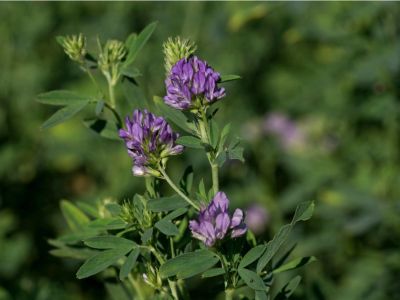How to Grow Alfalfa Plant
Easily grown and propagated, alfalfa adapts well to nearly any garden, tolerating a wide range of growing conditions. It makes a good drought-resistant plant too, as it doesn’t like wet feet. In fact, too much moisture can lead to mold growth. When growing alfalfa, choose an area with plenty of full sun. Also look for a well-draining area with a soil pH level between 6.8 and 7.5. Prior to planting you should clean the area, work the soil, and remove any debris. Pure alfalfa seed can be purchased from most feed supply stores.
How to Plant Alfalfa
Those living in cooler climates can plant alfalfa in spring while milder regions should opt for fall planting. Since alfalfa roots quickly, it doesn’t require deep planting—only about a half inch (1 cm.) deep. Merely sprinkle the seeds evenly onto the soil and cover lightly with dirt. Use about ¼ pound of seeds per 25 square feet and space rows about 18 to 24 inches (46-61 cm.). You should begin to see sprouts within seven to ten days. Once seedlings have reached about 6 to 12 inches (15-31 cm.), thin them as needed to avoid overcrowding issues. Unless growing alfalfa as hay for livestock, allow it to grow until crops are ready to be planted or its purple blooms appear, at which time you can simply mow it down and till it into the soil or leave it. The alfalfa shoots will breakdown. This ‘green manure‘ will then fertilize the soil as well as stimulate microbial activity, thus aerating it too.
Harvesting Alfalfa Plant
If planting alfalfa for livestock, it will need to be harvested and cured prior to flowering (known as early-bloom stage). It becomes more difficult for these animals to digest once the plant matures. Harvesting in this early-bloom stage also ensures the most optimal nutrient percentages, which is often found in the plant’s leaves. Do not cut alfalfa if rain is imminent, as this can damage the crop. Rainy weather can lead to issues with mold. Quality alfalfa hay should possess good green color and leafiness as well as a pleasant aroma and thin, pliable stems. Once harvested, the ground will need to be turned before next season’s planting takes place. Alfalfa has few pest problems, however, the alfalfa weevil can cause serious damage. In addition, the stem nematode can infest and weaken stem buds.
